Accelerating local net zero investment
Local net zero could open up a £500bn investment opportunity
And it’s vital if we want to meet the UK’s 2050 climate targets while creating healthier, more prosperous futures.
The UK needs more than £1 trillion additional investment to meet its climate commitments by 2050. As this is well beyond the limits of public funding, a subject of recent focus has been how to mobilise the required green investment from the private sector.
At the same time, many have been considering the role of local places in delivering net zero: PwC/UKRI research (2022) found that delivery tailored to local places could generate four times greater value. Various government initiatives are now working to empower local authorities to play a leading role in this transition. Examples are the Trailblazer devolution deals for combined authorities, funding for Local Net Zero Accelerator pilots, and new clarity around the role of local energy planners.
But local authorities need more capacity to mobilise green investment in their places.
With this in mind, UKRI commissioned PwC to answer the following questions:
- How much of the UK’s total net zero investment must be spent in local places?
- How much of this will need to come from private sources?
- How aware are investors about these investment opportunities?
- What support do local authorities and innovators need to access the private capital required?
Our key findings, including the size of the market opportunity and what’s needed to unlock it, can all be found below. Or watch this video from the team behind the new guidance where they explore how it could help you and your local partners to accelerate your journey to net zero.
The future of energy is local
Many of the critical actions we need to deliver net zero in buildings and transport can only be delivered locally
- Electrifying our towns and cities will increase demand on the grid. And to transition to renewable energy, we’ll need to generate power at all scales across a decentralised energy system.
- Balancing supply and demand within this new energy system will call for storage solutions and smart technologies at the local level to manage fluctuations and enable greater resilience. Reducing energy demand by improving energy efficiency and retrofitting will also be necessary.
- It is increasingly recognised that local authorities will play a key role in delivering the UK Net Zero Strategy, and Chris Skidmore’s Mission Zero review underscored this.
A local approach generates higher benefits for lower costs
- Harnessing local knowledge, engaging with communities, and tailoring actions to specific places can also lead to significant cost savings. UKRI/PwC analysis showed that a place-based approach to net zero could save £137 billion in investment to cities while generating an additional £431 billion in energy savings and wider social benefits. For example, by:
- Accelerating the transition through better community engagement and consent for change
- Creating financial opportunities for investors and lowering bills for end users
- Building resilience and diversity into the energy system, dampening the impact of future price changes and extreme weather events
- Enabling local growth in jobs, training and enterprise
- Improving health and wellbeing from cleaner air and better living conditions.
Local Net Zero projects will drive the transition
Renewable energy generation
Using renewable energy sources to generate electricity such as solar, onshore wind and energy from waste
Private wire and heat networks
Delivering electricity and/or heat through private networks that are not part of the National Grid. Electricity and heat may be generated from a range of renewable energy sources
Energy storage and flexibility services
Technologies that store energy - mainly batteries - as well as services that enable and incentivise the balancing of energy supply and demand
Building energy efficiency and retrofits
Installing measures that improve the energy efficiency of existing buildings and/or replace fossil fuel heat sources with low carbon technologies
EV infrastructure
The infrastructure and services required to charge electric vehicles, predominantly EV charging points
Public transport and mobility services
The infrastructure and services required to enable the adoption of active and low-carbon public and private mobility
There is a £500bn investment opportunity
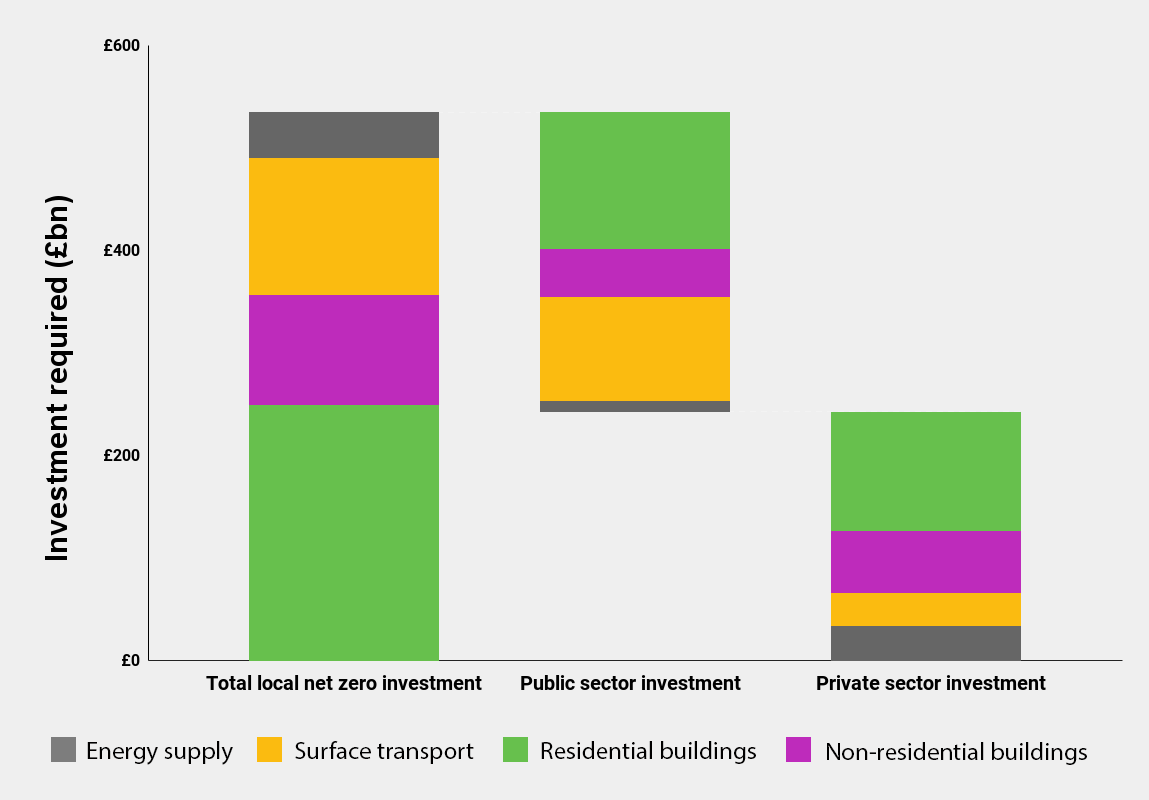
Investment required to reach net zero by 2050 in local energy, buildings and transport sectors
£1 trillion
NATIONAL INVESTMENT
In our latest analysis, we estimate that the UK needs to invest £1.1 trillion to decarbonise electricity supply, buildings and transport
£500 billion
LOCAL INVESTMENT
£544 billion of this - £20 billion a year - is needed for local investments, predominantly in buildings and transport as well as local energy assets involved in both supply and demand management
£250 billion
PRIVATE SECTOR INVESTMENT
Our research shows that almost half £250 billion will need to be provided by the private sector, which opens up exciting local investment opportunities
How to unlock private investment into local Net Zero projects?
We asked investors what their perceptions of the challenges were and what action is needed to unlock local net zero investment.
Despite pockets of success, most local authorities across the UK still lack the capacity and capital needed to scale up their projects to deliver their net zero ambitions, and most investors are currently unaware of this significant market opportunity. Why?
The results of our engagement with investors show that the challenge is no longer technical. In their responses, investors described 16 financial, structural and regulatory barriers, shown in the graph below, that are currently blocking significant levels of investment.
Top local net zero investment barriers
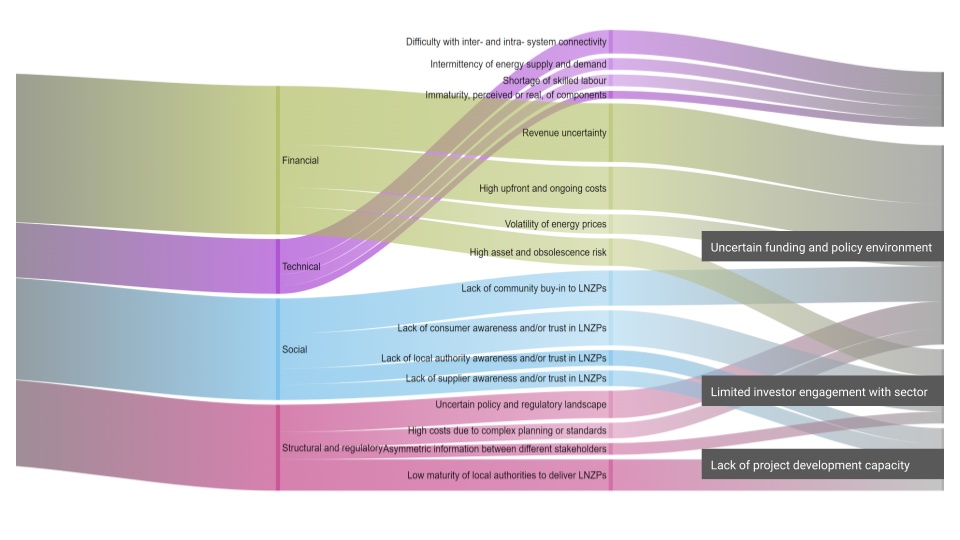
Sankey diagram showing investment blockers
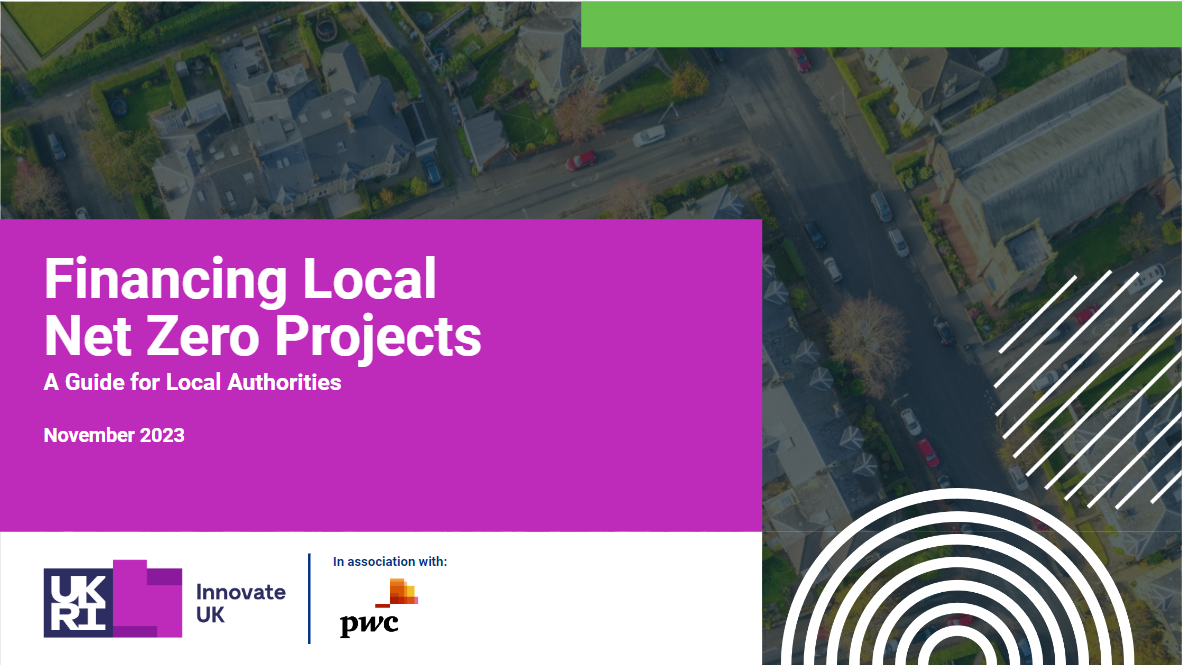
PROGRAMME SUPPORT
Lack of project development capacity
Local authorities lack the resources to turn concepts into pipelines of investable projects. Well-developed business cases and technical assistance for project development remains limited. We estimate that £25-50bn of development capital (5-10% of total investment) will be needed for local net zero projects over the next 25 years.
‘Financing Local Net Zero Projects: A guide for Local Authorities’ walks local authorities through the various complex choices involved in commercialising projects. It provides a solid evidence base that will help users to progress projects in the absence of, or alongside, technical assistance.
Read report
PROGRAMME SUPPORT
Limited investor engagement with sector
Integrated, multi-vector projects are complex and can be difficult to communicate in terms that both investors and local innovators understand.
‘Market intelligence report: Local Net Zero Projects’ aims to demystify the local net zero sector for the investment community. The document summarises the market, the types of assets involved, typical commercial structures, risk profiles and expected returns. The report mirrors market intelligence reports in other sectors and should be updated once a year.
Read report
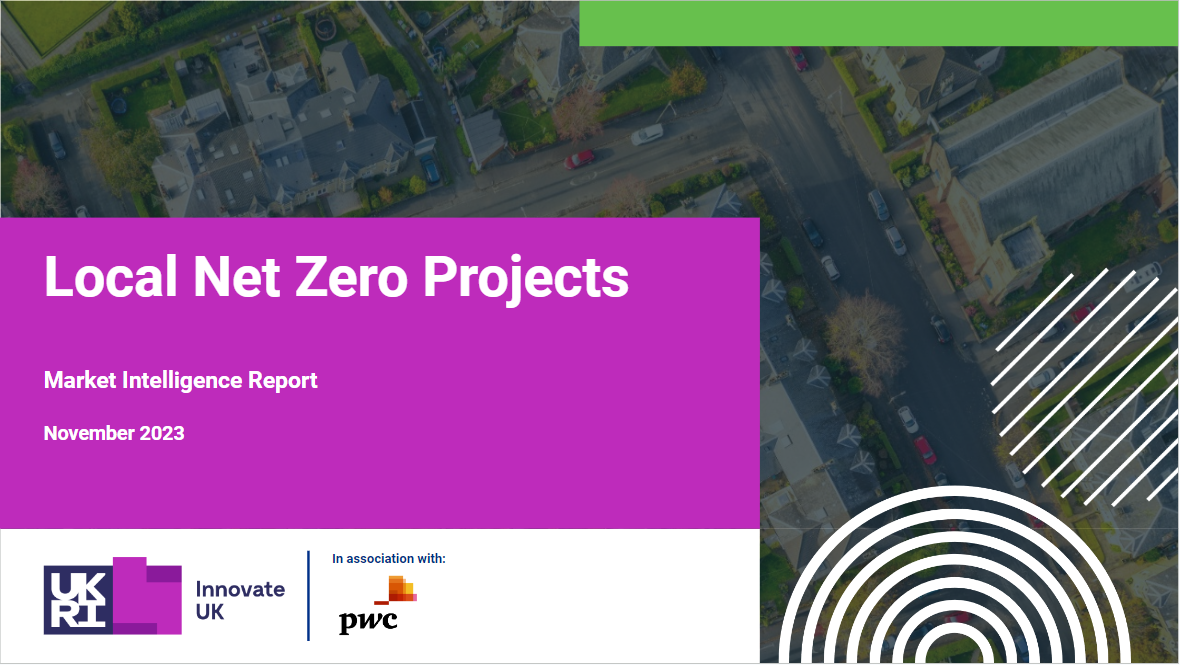
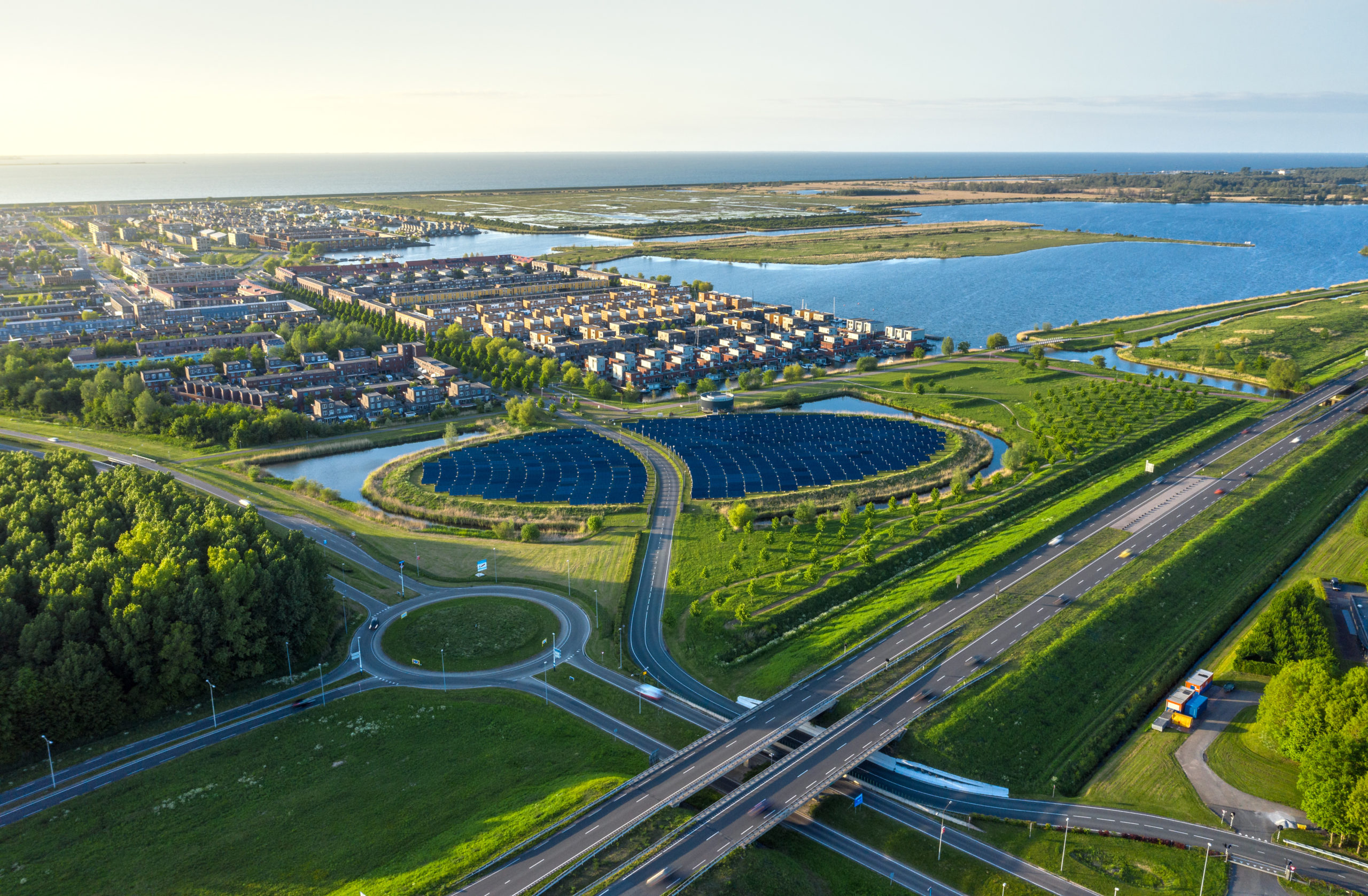
PROGRAMME SUPPORT
Uncertain funding and policy environment
Significant funding gaps and a policy and regulatory environment that is struggling to keep pace with local energy innovation, along with a lack of capacity on the ground amongst local authorities, creates a perfect storm that is slowing down pipeline development.
These non-technical barriers to investment and delivery are the very challenges that the Innovate UK Net Zero Living programme has been set up to solve. It builds on five years of innovation and learning delivered by the Prospering from the Energy Revolution programme.
The Net Zero Living: Thriving Places programme is offering capacity building, upskilling and technical assistance support to a cohort of up to 50 places. This support will deliver significant resources and knowledge sharing insights to the wider local authority community, alongside support that is already on offer from organisations such as the UK Infrastructure Bank, so no place is left behind.

Financing, planning and delivering local net zero projects: new support for local authorities
Event recording and slides now available.
Watch now
What's next | Net Zero Living programme's latest insights
Over the next two years Innovate UK’s Net Zero Living programme will continue unlocking barriers to investment in local net zero projects and accelerate delivery of net zero across the UK.

